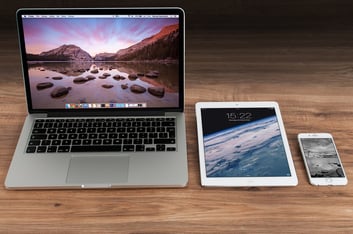As the spring time approaches, many of us will take the time to do some spring cleaning around the house, in our cars, offices, etc. But what about your work space and your technology?

"How do I know when it's time to clean up my desktop?"
If you have to ask then you should probably read this!
Maintaining your desktop and organizing your files on your device is time consuming, especially if you've neglected to do so over a long period of time. However, it will be beneficial in the long run and will result in better performance overall- who doesn't love faster internet speed and a sense of accomplishment!?
Step One: Dedupe Files
The best way to start spring cleaning in your professional life is by clearing up the clutter! There is no reason to keep the 12 variations of your resume, photos, reports, or especially applications. Deleting the duplicate files not only result in a more organized workspace with less confusion and easier navigation but you'll get back a whole lot of memory space! More memory space means a happier and healthier system :) If you're nervous about deleting something you need consider investing in external hard drive.
To take the manual labor out of deduping try downloading: Duplicate Detective.
This app detects duplicates and delete them instantly for your convenience.
Step Two: Organize with a Folder System
Organize with a Folder System: Now that you have "deduped" files, take the files that are left and yes including all the files that are covering your desktop display and organize them into their rightful folders.
For example: Make a folder for all of your pictures and videos (Media), make another for all your business related files (Office), and maybe another for your personal files (Personal), then drill down from there.
Step Three: Out with the Old & In with the New (Downloads)
Have you ever taken a moment to look at your Downloads folder? It's jammed!
You're are most likely to find a ton of downloads stored on your computer that you aren't even aware of: that old PDF file you downloaded a year ago, a concert ticket you archived from two months ago, or even a picture you downloaded for a presentation. Although you do not see these files, they too take up storage and memory. If you do not use these files anymore, delete them!
Step Four: Back up! Back up! Back up!
If there are documents or files that you want to keep on your device but don't necessarily need, back them up! Consider investing in an external drive or a cloud system such as Dropbox. They will be off of your device but still saved for a later time if and when you may need or want them.
Given Murphy’s Law, failure happens at the least opportune time. So if and when your system malfunctions or, dare we say, crashes, backing up these files is crucial. With no more desktop clutter, your files remain safe and accessible.
Step Five: Be Cache Free
Whenever you visit a website, your internet browser downloads assets such as HTML, CSS, JavaScript and images into your browser's local cache. Caching is used to access commonly accessed data. Essentially, the page remembers the resources that the browser has already loaded; this is so it doesn't have to retrieve them on every page load. Over a period of time, you may build up a sizable cache. Clearing the cache on your browsers frees up some space and may speed things up and improve application performance.
It is smart and beneficial to take time to follow these steps on all of your technological devices. Whether it be your phone, tablet, laptop or desktop computer, you may never realize how much accumulates over a long period of time. Plan a monthly or quarterly cleaning date if that helps. In the long run, it will not only help you stay more organized, but it will help your device run more efficiently and effectively!
Happy Spring Cleaning!
P.S. Your network may need some attention too! Consider clicking below for more information on a network assessment



